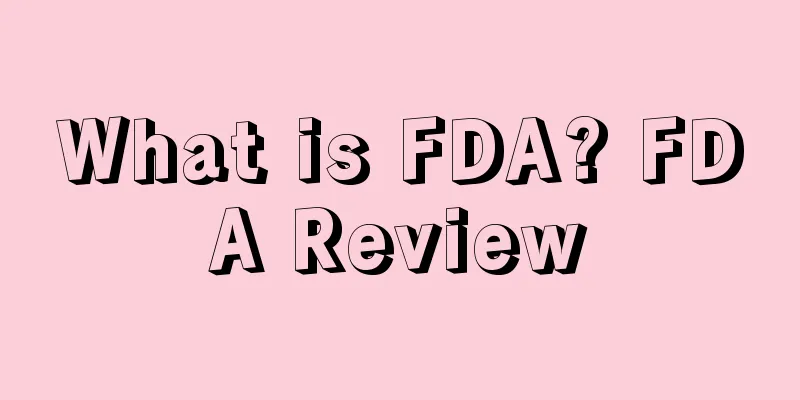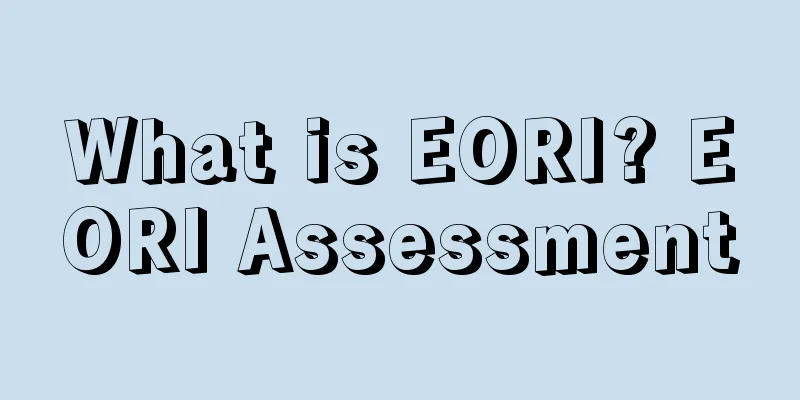What is FDA? FDA Review

The U.S. FDA (Food and Drug Administration) is the abbreviation of the Food and Drug Administration. It is one of the executive agencies established by the U.S. government in the Department of Public Health (PHS) under the Department of Health and Human Services (DHHS). The FDA is mainly divided into two contents: testing and registration. Medical devices, cosmetics, food and drug products need to be registered with the FDA. English: Food and Drug Administration Chinese: Food and Drug Administration Established in 1906Basic IntroductionThe U.S. Food and Drug Administration (FDA) is one of the executive agencies established by the U.S. government in the Department of Health and Human Services (DHHS) and the Department of Public Health (PHS). As a scientific management agency, the FDA's responsibility is to ensure the safety of food, cosmetics, drugs, biologics, medical devices and radioactive products produced or imported into the United States. It is one of the earliest federal agencies whose main function is to protect consumers. Supervisor's product type Supervision and inspection of food, drugs (including veterinary drugs), medical devices, food additives, cosmetics, animal food and drugs, wine and beverages with an alcohol content of less than 7%, and electronic products; testing, inspection and certification of items that affect human health and safety caused by ions and non-ionizing radiation generated by products during use or consumption. According to regulations, the above products must be tested and proven safe by FDA before they can be sold on the market. FDA has the right to inspect manufacturers and prosecute violators. significanceThe FDA International Free Sales License is not only the highest level of certification among the US FDA certifications, but also the highest level of certification for food and drugs approved by the World Trade Organization (WTO). It is the only certification that must be fully approved by the US FDA and the World Trade Organization before it can be issued. Once this certification is obtained, the product can enter any WTO member country smoothly, and even the marketing model cannot be interfered by the government of the country where it is located. RenewalThe FDA renewal period is from October 1st to December 31st of each year. Companies must pay an annual fee in US dollars during this period to maintain the validity of FDA registration. If the renewal fee is not paid in time, the company will be deregistered by the FDA and will be disqualified from entering the US market. Does Amazon need FDA certification or registration?This is mainly determined by the seller's products! When you list food contact materials (tableware, cups, baby bottles, etc.), cosmetics, medicines, health products and other product categories on Amazon US, you generally need to provide an FDA test report. You can find a third-party testing agency approved by Amazon to make the relevant report. If you register with the FDA, companies that export food, drugs, and medical devices to the United States must register with the FDA and list their companies and products, otherwise customs will not clear them. Therefore, like the EU's CE certification, it is a mandatory requirement. Common product categories on Amazon1. Food FDA registrationAccording to the requirements of the Modern Food Safety Act of the United States, the owners, operators or responsible agents of domestic or foreign facilities that produce/process, pack or store human food or animal feed consumed in the United States, or individuals authorized by them, must register their facilities with the FDA. The types of products for human consumption include alcohol, flour and sugar products, beverages, candy, cereals, cheese, chocolate or cocoa, coffee or tea, food coloring, regular diet or three meal replacements including medicinal foods, functional foods (including Chinese herbal medicines), condiments, aquatic products, food additives, sweeteners, fruits and their products, gels, ice cream, imitation dairy products, pasta, meat, milk, broth or jam, nuts, eggs, vegetables and their products, vegetable oil, simulated meat, flour or starch, etc. Animal foods include: cereals, oilseeds, alfalfa, amino acids, animal products, brewing products, preservatives, citrus products, distilled products, enzymes, oils, fermented products, aquatic products, dairy products, minerals, molasses, non-protein nitrogen products, peanut products, animal waste recycling products, screenings, vitamins, yeast, pet food, etc. These food companies must submit registrations to the U.S. FDA to obtain a FFRN (Food Facility Registration Number) and PIN. When a food company submits a registration to the U.S. FDA, it must designate a person living in the U.S. as its U.S. agent. At the same time, every two years, between 12:01 a.m. on October 1 and 11:59 p.m. on December 31 of an even-numbered year, the original FDA registration number must be renewed, otherwise the original registration number will become invalid. Low-acid canned and acidified foods must register with the FDA to obtain the FFRN number and PIN, and must also file a processing declaration to obtain a Submission Identifier (SID number). In addition to registering with the FDA to obtain the FFRN number and PIN, health food products also need to make functional claims. Companies need to submit functional claims to the FDA for review and filing within 30 days after the product is launched. Egg farms, according to the regulations 21 CFR 118.1 (a), have more than 3,000 hens, and the eggs are not sold directly to consumers. Egg farms must register with the FDA. The company must first register with the FDA for food facilities as required by ordinary food companies, in addition to the FFRN number and PIN, and then obtain the Shell Egg Producer Registration number. When food is listed on the Amazon platform, it will be required to provide these registration numbers. 2. CosmeticsAccording to the US FDA cosmetic regulations, cosmetic registration is a voluntary requirement. Cosmetics companies can register cosmetics through the electronic system VCRP or submit paper documents before or after the product is launched in the United States. After registration, the company will have a company registration number and a product formula number (CPIS). The information that the company needs to provide includes company information (such as name, address, person in charge, contact information, etc.) and product information (such as trademark, formula, raw material CAS number, etc.). When cosmetics are listed on the Amazon platform, they will be required to provide these registration numbers. 3. Medical devicesThe U.S. FDA classifies medical devices into three levels: Class I, Class II, and Class III according to their risk levels. Class III has the highest risk level. Most Class III products must apply for PMA before they can be put on the market. The products must undergo clinical trials. After the products obtain the PMA number, they must register the company and list the products. After obtaining the registration number, they can be put on the market. Class II products are medium-risk products. Most Class II products must apply for FDA 510K before they can be put on the market. After obtaining the 510K number, they must register the company and list the products. After obtaining the registration number, they can be put on the market. Class l products are low-risk products. Most Class I products are 510K exempt products. As long as the company registers and lists the products with the FDA and obtains the registration number, the product can be put on the market. In the U.S. FDA's definition of medical devices, medical devices have a very broad scope, including large, medium and small instruments and equipment used in hospitals, such as MRI, CT machines, B-ultrasound, monitors, hospital beds, scalpels, etc., home blood pressure monitors, thermometers, wheelchairs, etc., and even products that are considered ordinary consumer goods in other countries, such as toothbrushes, glasses, diapers, sanitary napkins, etc. When these products are listed on the Amazon platform, they will be required to provide a registration number. 4. DrugsThe FDA has a complete set of certification procedures for pharmaceutical products to ensure the safety and effectiveness of new drugs. The most common one is to register OTC drugs with NDC (National Drug Verification Number). Amazon FDA Certification Process1. Preparation Copies of production (sanitation) license and certificate of conformity; Company profile (establishment date, technical strength, main products and their performance, asset status). 2. Acceptance of application for preliminary technical review Submit English translations of DMF (Drug Master File) and SOP (Standard Operating Procedure) to the agent; 3. DMF information review FDA carefully reviews and checks whether what is written in the DMF document is true; If the FDA finds no major errors and believes that the requirements are met, it will propose a pre-approval inspection plan. 4. FDA inspection FDA inspectors inspect the factory and ask questions, and the factory must answer them one by one; Amazon FDA certification fees: Different products have different FDA certification fees. The significance of US FDA certification1. U.S. Customs has the right to "automatically detain" products without FDA certification; 2. Some small countries have approved it. Since small countries do not have their own regulations, they will rely on the regulations of big countries to regulate exporters; 3. Improve product competitiveness among products in the same industry. FDA major events and regulations1820: Eleven physicians meet in Washington, D.C. to develop the United States Pharmacopeia. 1848: The Imported Drug Act was enacted, requiring U.S. Customs to prevent the entry of counterfeit and substandard drugs from overseas through inspection. 1862: President Lincoln appoints Charles M. Wetherill to the Bureau of Chemistry in the Department of Agriculture, which becomes the predecessor of the FDA. 1883: Harvey W. Wiley becomes chief chemist for the Bureau of Chemistry of the Department of Agriculture. Wiley is known as the "Father of the Pure Food and Drugs Act" for his work initiating federal legislation. 1902: The Biologics Control Act (BCA) was enacted to ensure the purity and safety of sera, vaccines, and products used to prevent and treat human diseases (background ~ tetanus incident). 1906: US President Roosevelt signed the Pure Food and Drug Act (background ~ Panacea incident). 1914: The Harrison Narcotics Act is enacted, the first attempt to regulate narcotics. 1938: The Food, Drug, and Cosmetic Act was enacted, which for the first time required pharmaceutical manufacturers to provide proof of safety before their drugs were marketed (background ~ sulfonamide incident). 1941: The Insulin Amendment was enacted, requiring the FDA to test and ensure the purity and potency of emergency medicines for diabetics, marking the beginning of Good Manufacturing Practices (GMP). 1951: The Prescription Drug Amendments are considered the earliest division between prescription and over-the-counter (OTC) drugs. 1962: The Kefauver-Harris Drug Amendments were enacted, which for the first time required pharmaceutical manufacturers to prove the effectiveness of their products before they were marketed, and required the FDA to conduct on-site inspections of all registered drug production facilities at least once every two years (background ~ thalidomide incident). 1965: The Abuse of Drugs Amendments Act establishes for the first time guidelines for the classification of drugs susceptible to abuse to address problems caused by the abuse of sedatives, stimulants, and hallucinogens. 1968: The FDA issues the Drug Efficacy Research Implementation Plan, implementing the National Academy of Sciences' proposal to conduct effectiveness studies on drugs first marketed between 1938 and 1962. 1983: The Orphan Drug Act was enacted, which provides tax incentives and limited exceptions to registration reviews to encourage the development and marketing of drugs to treat rare diseases. 1984: The Drug Price Competition and Patent Term Restoration Act was enacted, which simplified the application for the marketing of innovative drugs and generics and accelerated the launch of low-cost generic drugs. At the same time, innovative drug manufacturers can apply for a patent restoration period of up to 5 years for their new drugs to make up for the time spent on their products in the FDA approval process (background ~ Flurazepam patent infringement case). 1988: The Food and Drug Administration Act was enacted, officially establishing the FDA as an agency of the Department of Health and Human Services, with a commissioner appointed by the President with the advice and consent of the Senate. 1992: The U.S. Congress passed the Generic Drug Enforcement Act to prevent fraud in application materials and authorized the FDA to impose "debarment" and other penalties on any illegal acts in the process of drug marketing. Any individual or group, if "debarred" by the FDA, will never be allowed to participate in any drug marketing related work (background ~ 1989 U.S. generic drug scandal). 2009: The Biologics Price Competition and Innovation Act was enacted, which established simplified procedures for the marketing of biosimilar drugs, hoping to reduce drug prices through competition and achieve the goal of medical reform. 2012: President Obama signs the FDA Safety and Innovation Act, which establishes the Breakthrough Therapy designation to accelerate the development and review of new drugs to treat serious or life-threatening conditions. 2015: The 21st Century Cures Act was enacted, which will require the FDA to simplify the drug approval process and consider more flexible clinical trial formats. This bill will not only further promote the FDA's reform of new drug review, but also give the National Institutes of Health more research resources to promote the development of basic medical research. References
|
<<: What is Flickr? Flickr Review
>>: What is Amazon Echo? Amazon Echo Review
Recommend
What is AAFA? AAFA Review
The American Apparel & Footwear Association (A...
Target to hire 100,000 seasonal employees in preparation for 2022 peak season
<span data-docs-delta="[[20,"获悉,据外媒报道,9月22...
What is Alibaba Cloud? Alibaba Cloud Review
Founded in 2009, Alibaba Cloud is a world-leading ...
What is Suma Brands? Suma Brands Review
Suma Brands was founded on the belief that the nex...
These states are taxing Amazon sellers! Starting this month
This year, Amazon has been making continuous tax ...
What is Lunar? Lunar Review
Founded in 2015, Lunar is a digital challenger ban...
What is KissMeTrics? KissMeTrics Review
KissMeTrics is an enterprise analytics service com...
By using these two tips, you can also optimize your ad ACOS
How can we optimize the ACOS of ads reasonably? H...
What is China Trade News Network? China Trade News Network Review
China Trade News Network (China Trade News) is a c...
Amazon plans to withdraw from the self-operated market? Sellers: Something is not right...
Recently, The Wall Street Journal published a news...
What is JollyChic? JollyChic Review
Jollychic is a B2C mobile shopping platform affili...
What is euservice? Review of euservice
Shenzhen EU Service Information Co., Ltd. (euservi...
Health Canada recalls several car seats! For sale in Temu!
It is learned that according to foreign media repo...
What is Fore Coffee? Fore Coffee Review
Fore Coffee is a product of venture capital firm E...









